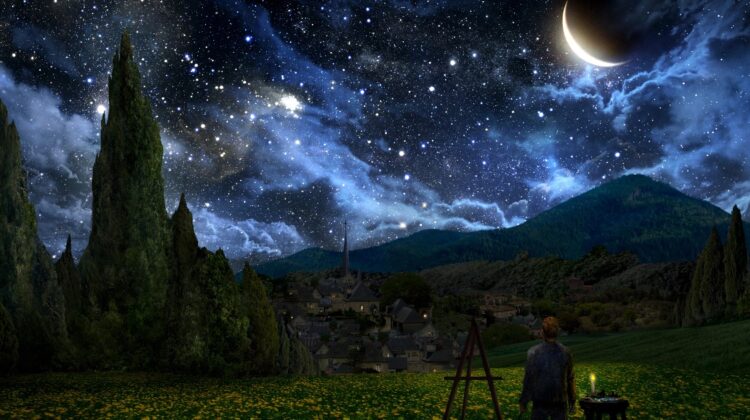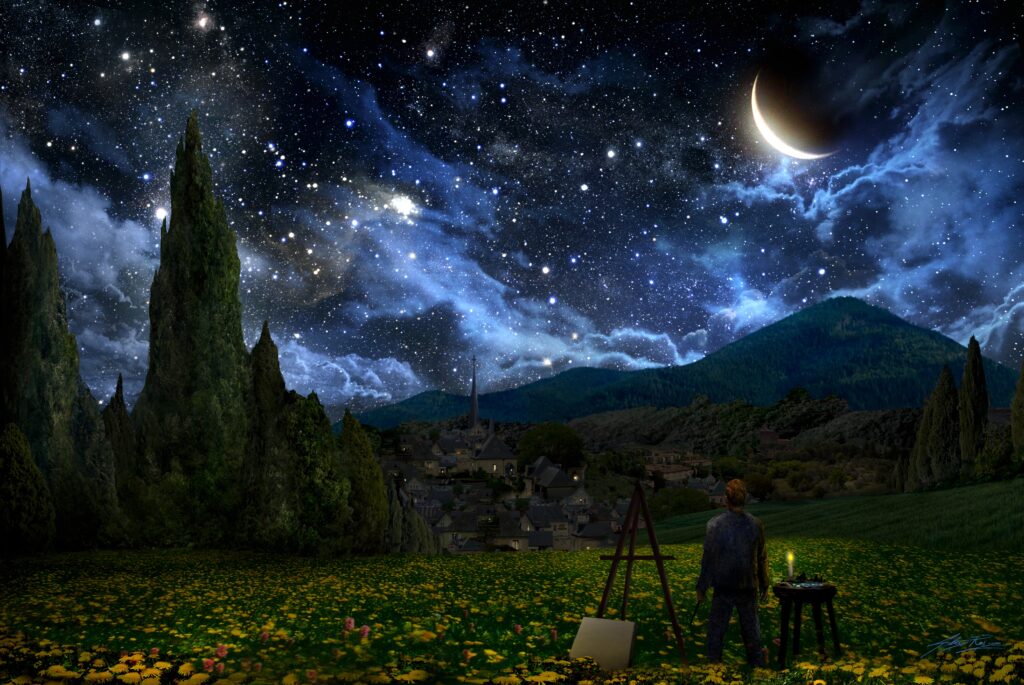
Vincent van Gogh’s “Starry Night” has captivated viewers for over a century, with its swirling skies and luminous stars. But have you ever wondered about the actual night sky that inspired the masterpiece? In 1889, when van Gogh painted “Starry Night,” light pollution was not yet the pervasive issue it is today, allowing for a view of the night sky that few of us are able to experience today.
Artist Alex Ruiz pays homage to van Gogh’s masterpiece with a stunning reimagining of what the night sky may have looked like in 1889 near Saint-Rémy-de-Provence. In Ruiz’s interpretation, the Milky Way stretches across the sky, creating a beautiful arc that is dotted with a dazzling array of stars. The crescent moon hangs low in the sky, casting a soft glow over the surrounding landscape.

But what is it about “Starry Night” that makes it such a powerful and enduring work of art? For one, van Gogh’s use of swirling brushstrokes creates a sense of movement and energy that makes the painting feel alive. The stars and the sky seem to dance and sway, as if caught in some cosmic dance.
The painting also reflects van Gogh’s own struggles with mental illness. At the time he painted “Starry Night,” van Gogh was a patient at the Saint-Paul-de-Mausole asylum, where he had committed himself in the hopes of finding some relief from his ongoing mental health issues. The painting is widely seen as a reflection of van Gogh’s own struggles, and a testament to his resilience and creativity.
Despite the beauty of Ruiz’s reimagined night sky, it is a reminder that light pollution has robbed us of the full majesty of the night sky. Today, many of us live in areas where the night sky is obscured by artificial light, making it difficult to see the stars and the Milky Way.
But even in our modern world, “Starry Night” and Ruiz’s homage to it are a reminder of the power of art to transport us to new worlds and open our eyes to the beauty that surrounds us.


Leave a Reply